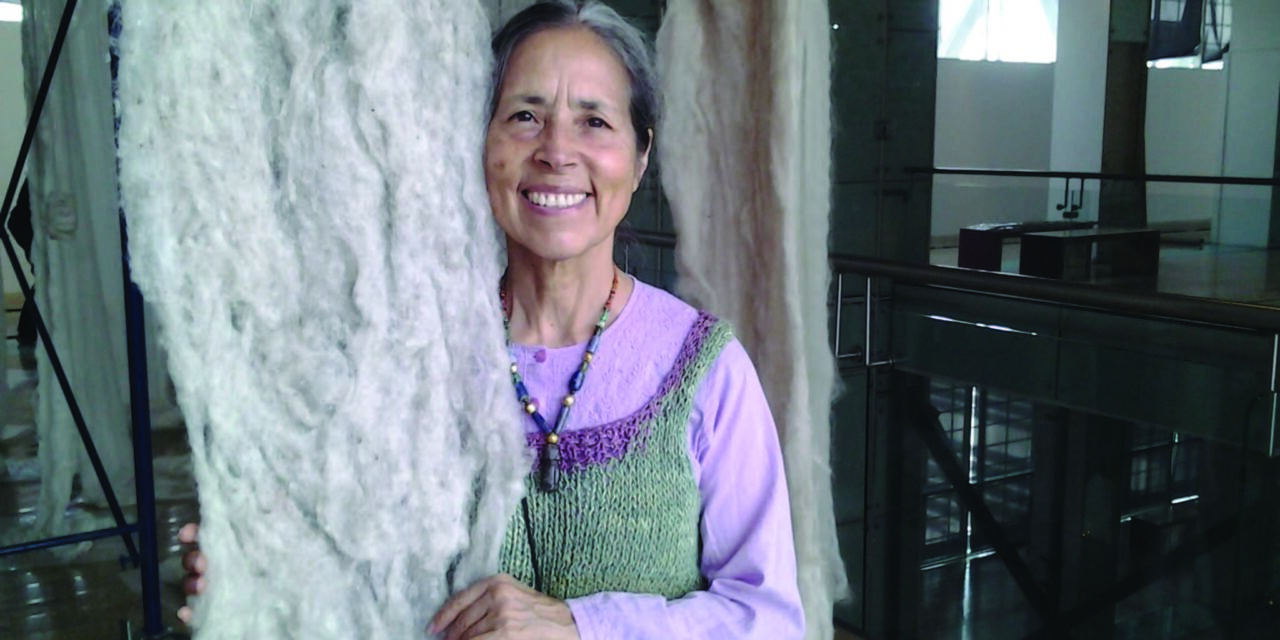What is the purpose of art? Humans find themselves consumed in this perpetual infinity of abstraction. Some assume the purpose of art is to orchestrate some grandiose societal change, others suggest art serves a utilitarian purpose, thus waiting room art is born. Among the vast amounts of ideologies, Cecilia Vicuña gives the world a unique perspective. As an individual who dabbles in film, poetry, painting, and sculpting Vicuña presents as a modern artist in every sense of the word.
Raised in Chile, she uses her native heritage as a source of inspiration for her work. In a video interview titled “Decolonizing Myself”, Vicuña recounts a pivotal anecdote in which she realizes an intrinsic tendency towards otherness. After leaving a childhood community of creative minds, Vicuña’s family placed her in a more traditional classroom. Her family placed her in an entirely English-speaking school where she was bullied for struggling with English. She found strength in understanding the outsider’s perspective. As a result, Vicuña fell in love with poetry and connected with the natural environment on a deeper level.
By the age of nine, she began to write, framing this gesture as her very first act of decolonization. By fifteen, Vicuña had her own studio where she created many of her earliest works. At the time, abstract paintings were her focus. Using a pallet of bright colors and intricate lines to formulate shapes lay the foundation of skills for her later works. She continued her passions while developing a style that echoed a similar political message to her contemporaries.
By the 1970s, Vicuña sought asylum in England after the elected president lost his position to a military coup. While in England, Vicuna helped in the formation of Artists for Democracy. An organization designed to create art inspired by the lived experiences under dictatorships.
The following year she traveled to Bogota, Colombia. In total, she would spend five years in Colombia honing in on her talents as a poet. Beginning in the art sphere of set design La Corporación Colombiana de Teatro hired Vicuña to create elaborate scenes for shows produced in the theatre. She then developed workshops in the Guambiano Indigenous community— a native population located in Cauca, Colombia. The purpose of those workshops was to collect local art produced by a unique community.
Two years later she directed her first documentary in the streets of Bogota titled “What is poetry to You?”. That same year, she went to New York City and became a member of a political activist organization devoted to producing feminist art called the Heresies Collective. The following year the Museum of Modern Art asked Vicuña to join in on an exhibition named “Latin American Video.”
After this exhibition, Vicuña’s career became a tour of the globe attempting to answer the original, timeless question: what is the purpose of art? Traveling to every corner of the world, she used a wide variety of media forms. Once she became based in New York, she was enveloped in a new world of inspiration. Vicuña used Christian iconography as inspiration for one of her most famous series. Her installation “Santos al Reverso” blends historically famous political icons into a modern portrait of saints collection. This series was exhibited in the Guggenheim Museum in the summer of 2022.
Currently, as a professor at the School of Visual Arts in New York, she focuses on instructing writing seminars at the graduate level. With a lifetime of diverse experience, she devoutly works to convey that intrinsic wisdom to a whole new generation of creative minds. Constantly in a quest to answer the question: what is the purpose of art?



